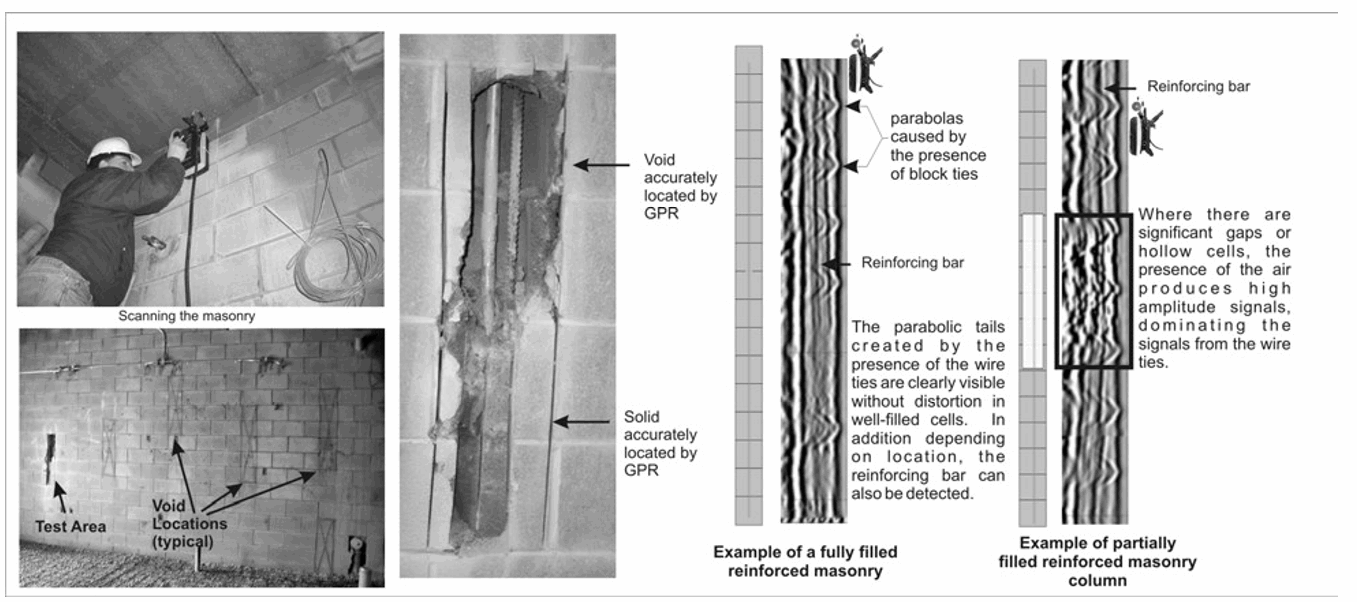R.G. Grieve1 and P.A. Jeffs2
- President, Tekron Services Inc, 2543 Palisander Avenue, Mississauga, ON L5B 2L1; rgrieve@tekron.com
- President, PJ Materials Consultants Limited, 11 Wagoners Trail, Guelph, ON, N1G 3M9; pjeffs@pjmc.net
ABSTRACT
The investigation of deteriorated buildings and masonry structures without creating damage to the fabric can be a difficult task. The challenges facing the investigator often include learning sufficient information regarding the masonry assembly to reliably identify primary and contributory causes of damage, and how to evaluate the condition and extent of hidden masonry components. Without sufficient, meaningful information, the development of an effective restoration strategy can become extremely difficult and this often results in destructive evaluation methods being utilised, such as the extensive removal of exterior masonry units.
Non-destructive testing (NDT) methods and computerised monitoring devices are now available that may be used to evaluate all types of buildings, including heritage structures and older masonry. This presentation provides a summary of a number of projects that used NDT and monitoring methods to assist in the effective development of restoration and conservation strategies. In particular, impact echo, ground penetrating radar and dynamic vibration response testing of stone, brick and concrete block masonry assemblies are demonstrated, together with selected examples of the data provided. The project examples include detecting voids and hidden damage within solid masonry, identifying damaged brick header units and delaminated dimension stone units, and determining the state of grouted cores within concrete block construction. Case studies will also be used to illustrate the use of monitoring devices to determine moisture-related conditions within masonry assemblies and the way in which the data can be used to determine the wetting/drying characteristics of the fabric.
KEYWORDS: ground penetrating radar, impact-echo, vibration response, impulse response; non-destructive testing; moisture monitoring.
4a-3



